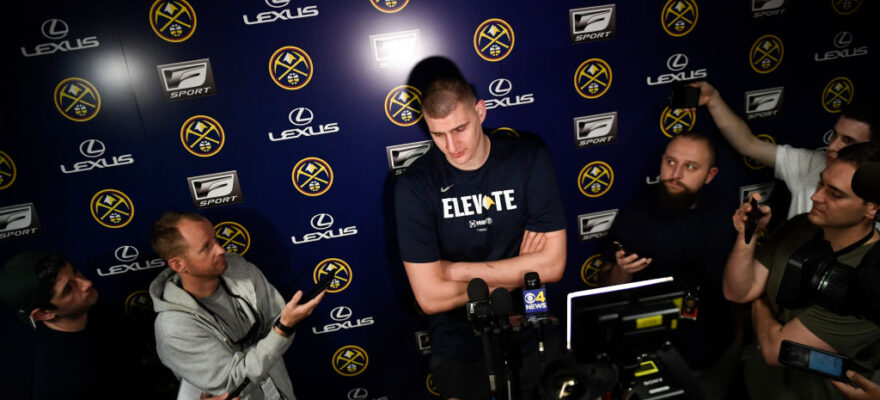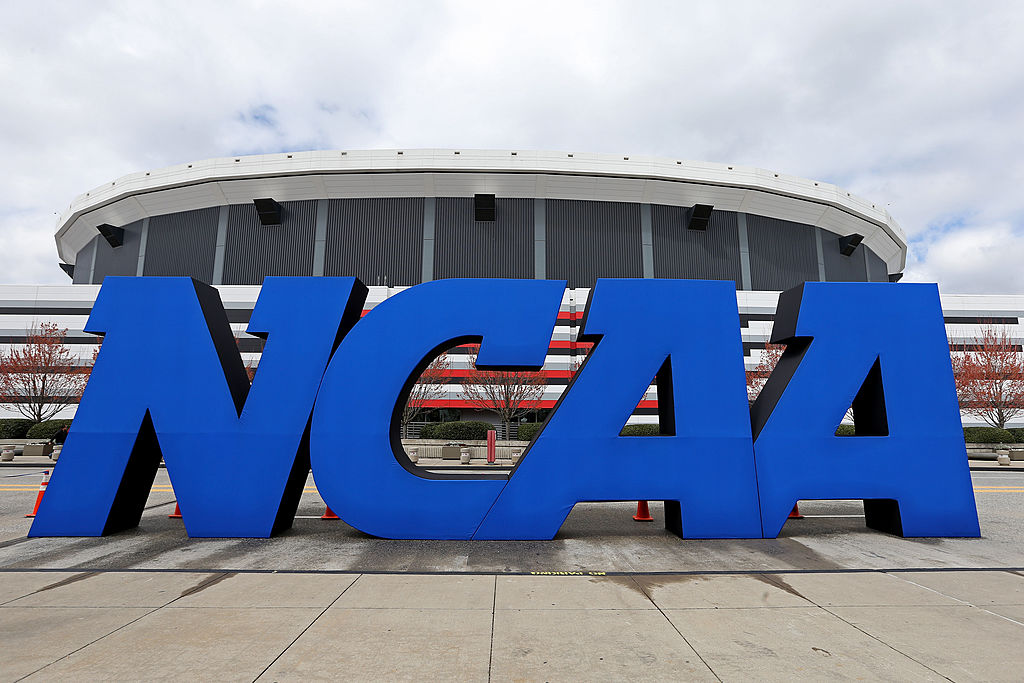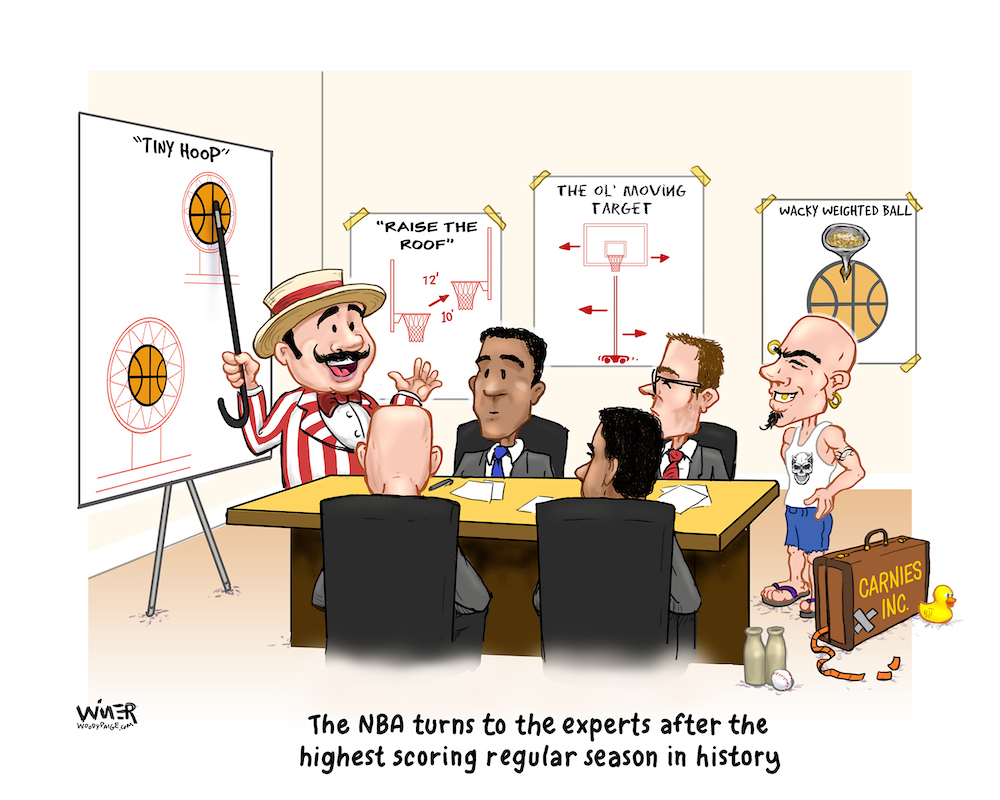If the NBA and NHL actually pull it off, most of the coverage of the upcoming returns to play will come from writers who might as well be reporting from their dens.
In fact, many probably will be reporting from their dens.
The leagues are planning to hunker down in hub cities — Edmonton and Toronto for hockey, and Orlando for hoops — under quarantine and bubble conditions. No fans. Television studio atmospheres.
The on-site media corps will be minimal at best, mostly due to COVID-19 reality.
Some of it might have been academic. The cost in budget and staff slashing times would have been staggering. The payoff in unique material would have been low, given the lack of access.
That said, it would be unfortunate if a “friend of the league” or “friend of the team” boosterism standard comes into play in selecting those admitted, and I’m including the NFL and MLB in that as they try to get off the ground in the 2020 seasons.
The NFL has issued guidelines limiting training-camp and preseason-period coverage to four screened reporters and two photo journalists. Four other sports are available for such folks as reps of rights-holders or the NFL Network.
MLB writers covering camp in the league’s stadiums are allowed in open-air press boxes, under strict social distancing and restricted-movement conditions. All interviews and availabilities will be by Zoom or other video means. The regular-season protocols are works in progress.
Regardless, writers will have mostly generic, not individual material. That’s been the trend in recent years, anyway.
To be clear: Considerably scaled-back access and the preponderance of “virtual” availabilities, rather than face-to-face interviews, are not out of line in 2020.
They’re musts.
In the big picture, this issue isn’t important. That’s a given in any sports discussion during the pandemic.
My concern, though, is that even after COVID-19 is in the rear-view mirror, to the extent that’s possible, the 2020 NBA and NHL protocols from the bubble conditions to an extent will remain in force in the two leagues with so many shared conditions, arenas, markets and even ownerships.
They worked! They give us more control! Let’s keep them!
And that’s bad for nearly everybody else, including fans.
Two assumptions:
- Open locker rooms, a cornerstone of quality coverage in the past but “temporarily” ruled out for now, won’t come back. They’re history. In the NBA and NHL, at least. I’ve witnessed access being scaled back gradually over the years, and while I’ll concede these are extraordinary and impossible-to-foresee times, the needle never swings back the other direction.
- Writers and other media members following “their” teams on the road, becoming less common even before the pandemic, will become even more rare … or non-existent.
The two are linked, because of the deterioration in access and the reliance on “virtual” availabilities and other material that is as easy to get without traveling.
It will be even harder to argue for following local teams on the road.
There have been many recent prominent stories and commentaries bemoaning the deterioration of the sportswriting craft.
The picture with those stories often is of a scribe with a pencil and notebook, a pen and tape recorder, or a smart phone, speaking with athletes alone or in a small group in a locker room.
That kind of scene has become more rare in recent years.
Even before the current conditions come into play, the reality is that post-practice and post-game availabilities increasingly often have come with coaches standing at podiums. That will be done virtually this year.
In the playoffs especially, designated players follow the coach. Regardless, it’s often stilted and predictable sessions, with template responses. (College football and basketball have this “Questions for the Student-Athletes?” approach down pat, with the relatively media-friendly schools at least having flexibility.)
On the pro team broadcasts of games, those sessions are shown live or within minutes.
They’re quickly posted on team web sites.
(National networks take exclusively over the NHL and NBA broadcasts after the traditional first round, so team networks step aside.)
Media members — and others — mine the generic, one-size-fits-all material, regardless of where they watched silently from the interview room or from home.
Still, in the past, there always has been the alternative for credentialed media members to take advantage of open locker rooms for access after practices and games. Team sites and broadcasters rely on them, too.
Moving forward, if locker rooms are off limits to the media, and I believe they will remain so, those types of generic podium/microphone in-person and virtual availabilities will become even more important. That’ll be the case if it’s completely “virtual” or if media still are in an interview room and asking questions.
Attempts to line up one-on-one interviews, whether in a hallway or on a practice floor or virtually (again, depending on real-world conditions at the moment), might be part of the big picture … but probably not. If one-on-one interviews via Zoom are deemed possible, great. But again, the two participants don’t even have to in the same state for that, as with old-school phone interviews in the past.
Back to the road issue: If a scribe on the road gets generally the same material as those not traveling, why go? (Cell-phone video of a morning skate — which the teams also shoot and post — isn’t a sufficiently compelling reason.)
This is something that isn’t brought up much, if at all, but I’ve noticed more and more in recent years: Editors might reasonably wonder about all of this after hearing their writers asking many of or all the questions, especially after road games where fewer media members are in the dressing rooms. The problem is, that material — generated by the traveling writer — is on team broadcasts or even social media before it’s on a site or in the paper. Other writers and websites that don’t travel use it, too.
Advances in “virtual” availabilities and coverage, especially as scribes become more savvy in its presentation, have been huge steps forward.
Mix the new with the old.
About Terry: Terry Frei is the author of seven books. His novels are Olympic Affair and The Witch’s Season, and among his five non-fiction works are Horns, Hogs, and Nixon Coming; Third Down and a War to Go; and ’77: Denver, the Broncos, and a Coming of Age. Information is available on his web site, terryfrei.com. His woodypaige.com archive can be found here.
More from The Woody Paige Sports Network:
- Time to stop bashing MLB over imperfect response to pandemic
- Betting odds to lead the NFL in rushing yards in 2020
- Woody Paige: Thanks to MLB owners, there will be crying in baseball
- Happy Father’s Day: Saluting the WWII pilot, college and NFL coach … and Dad
- Underdogs once again: Boise State Baseball players pledge to save program

















